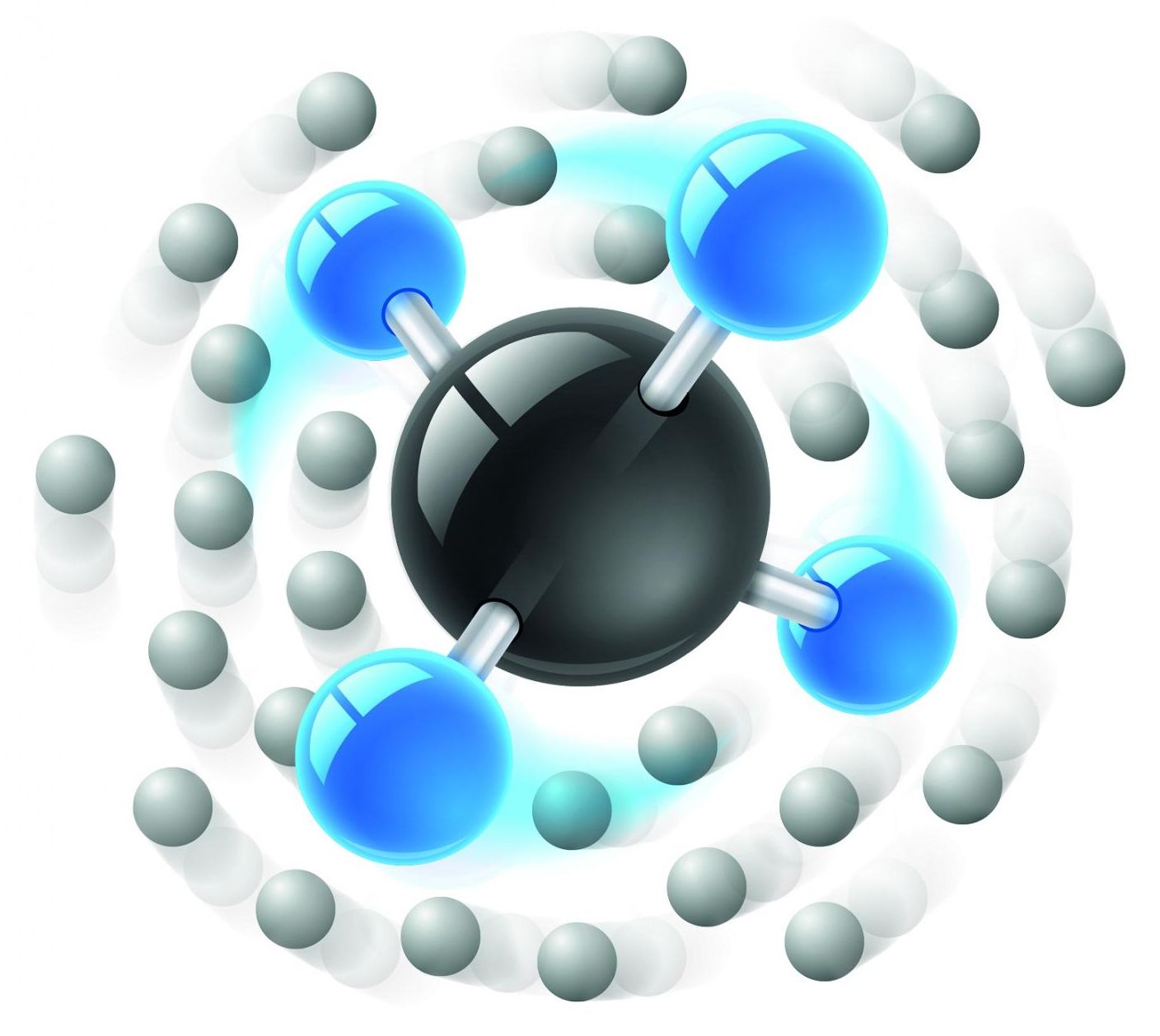How do molecules rotate in a solvent? Answering this question is complicated, since molecular rotation is perturbed by a very large number of surrounding atoms. For a long time, large-scale computer simulations have been the main approach to model molecule-solvent interactions. However, they are extremely time consuming and sometimes infeasible. Now, Mikhail Lemeshko from the Institute of Science and Technology Austria (IST Austria) has proven that angulons—a certain type of quasiparticle he proposed two years ago—do, in fact, form when a molecule is immersed in superfluid helium. This offers a quick and simple description for rotation of molecules in solvents.
In physics, the concept of quasiparticles is used as a technique to simplify the description of many-particle systems. Namely, instead of modeling strong interactions between trillions of individual particles, one identifies building blocks of the system that are only weakly interacting with one another. These building blocks are called quasiparticles and might consist of groups of particles. For example, to describe air bubbles rising up in water from first principles, one would need to solve an enormous set of equations describing the position and momentum of each water molecule. On the other hand, the bubbles themselves can be treated as individual particles—or quasiparticles—which drastically simplifies the description of the system. As another example, consider a running horse engulfed in a cloud of dust. One can think of it as a quasiparticle consisting of the horse itself and the dust cloud moving along with it.










Comments are closed.